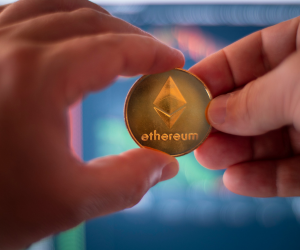Learn what DePIN is and why it is relevant, how these networks are transforming infrastructure, and explore successful projects. An essential guide for traders interested in decentralized technology.

What is DePIN and Why It Matters
Decentralized Physical Infrastructure Networks, known as DePIN, are revolutionizing the way we conceive technological infrastructure. Unlike traditional networks, DePIN uses blockchain technology to decentralize physical resources like storage, computing, and connectivity. But why should this matter to a trader? Simple: these networks open new investment and trading opportunities that were previously unimaginable.
The Origin of DePIN
DePIN emerges as a response to the need for more efficient and resilient infrastructure. With centralization, dominant tech companies control a large share of resources, creating single points of failure and limiting innovation. DePIN democratizes access, allowing anyone to contribute to and benefit from the network.
How DePIN Works
In essence, DePIN combines distributed physical resources with blockchain technology. Participants contribute assets such as bandwidth, storage, or computing power to the network and, in return, receive native tokens. These tokens can be traded on exchanges, creating a self-sustaining economic ecosystem.
Opportunities for Traders
For traders, DePIN offers an emerging market with high growth potential. By investing in tokens from DePIN projects, you can take advantage of the expansion of these networks and diversify your portfolio. Additionally, the volatility in this sector can be a goldmine for short-term trading strategies.
Benefits of DePIN
True Decentralization: Eliminates intermediaries and reduces censorship risks.
Scalability: By leveraging distributed resources, the network can grow organically.
Resilience: Without single points of failure, it is more resistant to attacks and failures.
Challenges and Considerations
Despite its advantages, DePIN is not without challenges. Regulation is a grey area, and mass adoption is still a work in progress. As a trader, it is crucial to conduct thorough due diligence before investing.
The Role of Blockchain in DePIN
Blockchain is the backbone that supports DePIN. It provides transparency, security, and an incentive system that aligns the interests of all participants. Without blockchain, coordinating decentralized resources would be nearly impossible.
Impact on the Global Market
DePIN has the potential to democratize access to infrastructure, especially in resource-constrained regions. This not only creates new investment opportunities but also drives global technological development.
How These Networks Are Transforming Infrastructure
Decentralized Physical Infrastructure Networks (DePIN) are changing the game in how technological infrastructure is built and maintained. Forget about costly central installations; now, the community drives and sustains the network. But how does this translate into trading opportunities?
Decentralization of Resources
Instead of relying on a single provider, DePIN distributes the load among multiple participants. This reduces operational costs and increases efficiency. For investors, this means DePIN projects can scale faster and offer attractive returns.
Incentive Economy
Participants are rewarded for contributing to the network, whether by providing storage, computing power, or connectivity. These incentives are often denominated in native tokens, which can appreciate in value. As a trader, you can capitalize on this appreciation by buying tokens early.
Interoperability and Standardization
DePIN promotes interoperability between different networks and services. This facilitates the integration of new projects and increases the utility of associated tokens. Greater utility often translates to higher demand and, therefore, higher prices.
Reducing Barriers to Entry
By democratizing access to infrastructure, DePIN allows more people to participate in the ecosystem. This expands the user base and increases liquidity in token markets, benefiting traders with more buying and selling opportunities.
Impact on Key Sectors
DePIN affects not just the tech sector but also has implications in energy, transportation, and communications. For example, decentralized energy networks allow users to sell surplus solar energy to their neighbors, creating new markets and associated tokens.
Enterprise Adoption
Large companies are beginning to explore DePIN to improve their operations. This legitimizes the sector and attracts more institutional investment. As a trader, staying on top of these trends can give you a competitive edge.
Risks and Mitigation
Despite the opportunities, it's important to consider the risks. DePIN token volatility can be high, and regulation is still uncertain in many jurisdictions. Diversifying and using risk management tools is essential.
Examples of Successful Projects in DePIN
To understand the potential of DePIN, it's useful to look at projects that are already making a difference. These success cases not only demonstrate the viability of the model, but also offer tangible opportunities for traders and investors.
Helium: The Decentralized Wireless Network
Helium has built a global network for IoT devices using user-provided hotspots. Participants earn HNT tokens by sharing their connection. Since its launch, HNT has seen impressive growth, and its adoption continues to rise.
Opportunity for Traders: The volatility and growth of HNT offer opportunities for swing trading and long-term strategies.
Arweave: Permanent Data Storage
Arweave offers a decentralized and permanent storage solution. Users pay a one-time fee to store data forever. Its token AR has gained attention for its unique approach and partnerships with significant projects.
Market Impact: AR has shown an upward trend, and its growing adoption makes it an asset to consider for portfolio diversification.
Render Network: Decentralized Compute Power
Render Network allows users to rent compute power for graphic rendering. This is especially useful in industries such as film and video games. Its token RNDR rewards those who provide resources to the network.
Practical Example: Independent animation studios can access compute power at reduced costs, while resource providers monetize their idle hardware.
The People's Network: Democratizing Telecommunications
This project aims to create a decentralized cellular network, where users install base stations and receive tokens in return. Although in its early stages, it shows the potential of DePIN in sectors dominated by large corporations.
Conclusion and Final Reflection
Successful projects in DePIN demonstrate that the decentralization of infrastructure is more than a passing trend; it is a transformation in how technological resources are managed. For traders, this opens a range of opportunities to invest in high-growth potential assets.
As Peter Drucker once said, "The best way to predict the future is to create it." By getting involved in DePIN, you are not just investing in the future but also contributing to its creation. It's time to explore, learn, and capitalize on what these networks have to offer.







